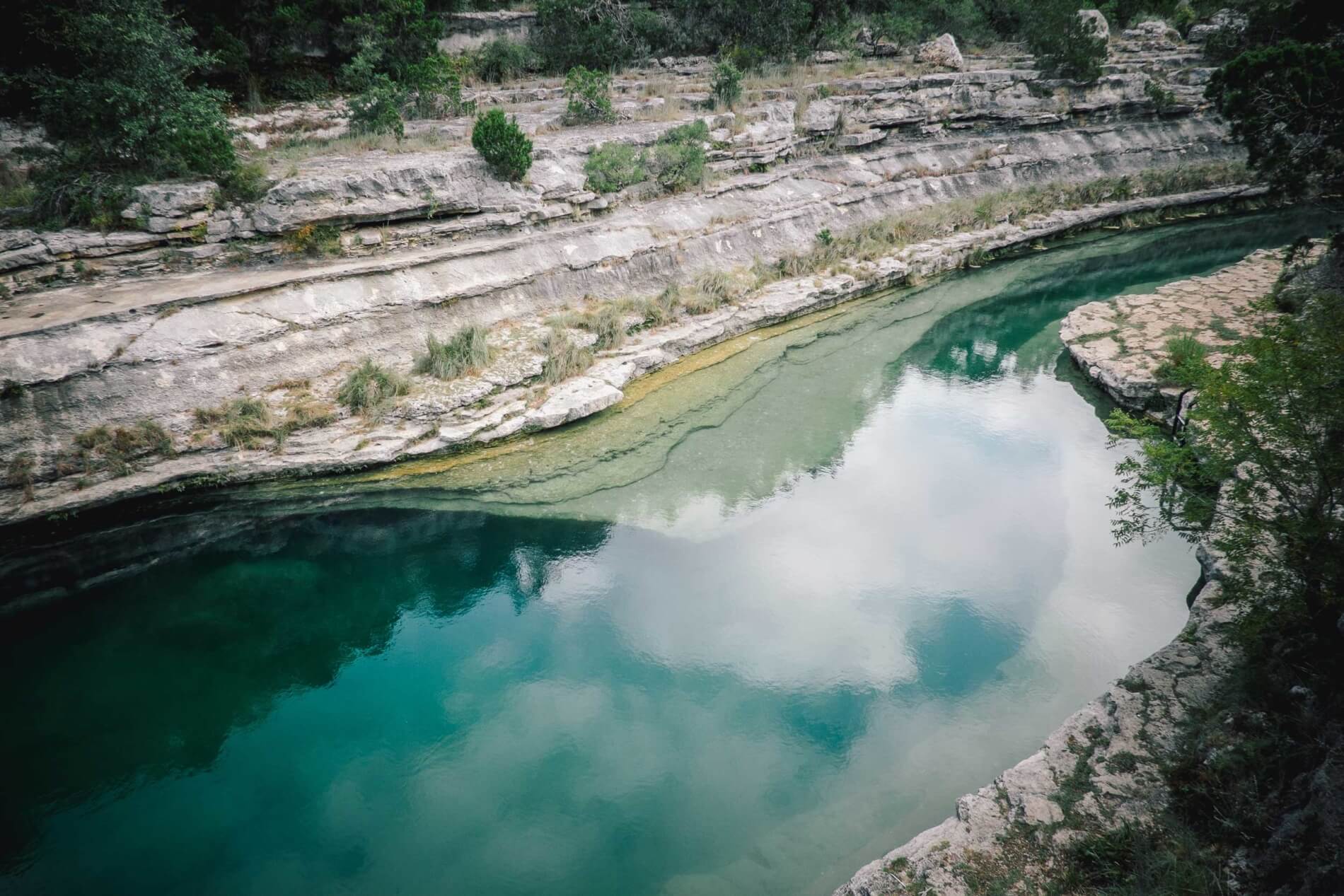

In the blazing heat of 100-plus-degrees, the clear, blue-green waters of Blue Hole have been a treasured part of the camping and retreat experience for thousands of guests.
The Foundation’s most famous swimming hole is located near the headwaters of the Frio River, directly below the iconic Circle Bluff.
And it’s been a much-anticipated and beloved tradition for campers of all ages to jump into the very chilly waters of the swim hole. For LLYC campers, the reward comes after a nearly three-mile hike from Echo Valley or a shorter hike from Singing Hills.
Beyond the appreciation of campers and guests, Blue Hole has won praise from outside experts: “The Blue Hole at the H. E. Butt Foundation Camp is beautiful and special because you have this beautiful, spring-fed water,” said Ben Hutchins, biologist with the Texas Parks and Wildlife. Over centuries, the water has sculpted the surrounding limestone walls into visually pleasing contours and deep trenches, creating what Hutchins described as “this beautiful canyon with forested hills and slopes all around.”
While it hasn’t been precisely measured, the Blue Hole is estimated to be 30 feet at its deepest.
But Hutchins is quick to point out that the colloquial term “blue hole” is inaccurately but commonly used to describe swim holes. The scientific term to describe a blue hole is “cenote,” a natural well or reservoir.
Hutchins describes the Foundation’s swim hole more as an underwater pothole—a space formed in cave and surface streams very slowly as boulders and pebbles and sand tumble around in flowing water, slowly digging out circular depressions.
Whatever it may be called, Blue Hole remains a beloved touchpoint in the overall Canyon experience.
“When you’re in the water, you can feel the water welling up around you, and you can feel this water kind of surrounding you. It’s very special,” said Dan Roloff, the Foundation’s Legacy Steward and historian.
John Kerr, the Director of the Foundation Camp, says the swim hole serves practical purposes for campers during scorching summer heat.
“It’s very, very refreshing. When you jump into the water at Echo Valley, the temperature is tepid because the water has had time to heat up for three miles,” Kerr said. “When you jump in [Blue Hole], it’s ‘Aaagh’!”
As Trey Tull, the Foundation’s Director of Property Planning and Stewardship describes it, Blue Hole is part of the “remarkable ecosystem” of the Frio River and very much part of the environmental conservation strategy to protect the river from pollution or degradation.
“My gut feeling is that the majority of our campers have never swum in a natural pool. They swim in chlorinated pools. More and more it’s unusual, an anomaly,” said Tull. “Our world is sanitized and safe. What we’re providing here is the ability to risk in a managed environment.”
It’s a sentiment that Laura Combs, the Children’s Program Coordinator with the Austin-based non-profit Mission Possible, shared during her summer trip with the group.
“It’s secluded and really fun to be out there in nature and to not have any distractions from technology. Water is perfect every time, nice and cool. Really fun to hang out there.”
Hundreds of thousands of people have experienced the East Fork of the Frio River. But only a few experience it like Scott Bauer.
Real County is experiencing its second-worst drought in over a century. How does that affect the Frio River Canyon?
Frio River water flows from the chill of Blue Hole at Headwaters to the warmth of the Echo Valley waterfront and beyond. Our work also changes as it flows from Real County to San Antonio and beyond. But it’s always driven by our mission: to cultivate wholeness in people and institutions for the transformation of communities.